Related Research Articles
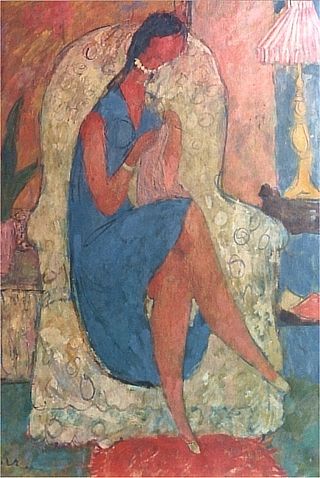
Willem Hofhuizen was a Dutch Expressionist painter.

The Rijksakademie van beeldende kunsten was founded in 1870 in Amsterdam. It is a classical academy, a place where philosophers, academics and artists meet to test and exchange ideas and knowledge. The school supports visual artists with a two-year curriculum.
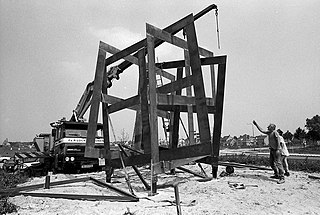
Jan Goossen was a Dutch sculptor.
Jan Martens is a Dutch painter.

Wim Steijn, was a Dutch painter.
Teunis (Teun) Jacob was a Dutch wall painter and sculptor, who lived and worked in Rotterdam since the early 1950s. He made both figure and nonrepresentational art.
Daniël (Daan) van Golden was a Dutch artist, who has been active as a painter, photographer, collagist, installation artist, wall painter and graphic artist. He is known for his meticulous paintings of motives and details of everyday life and every day images.
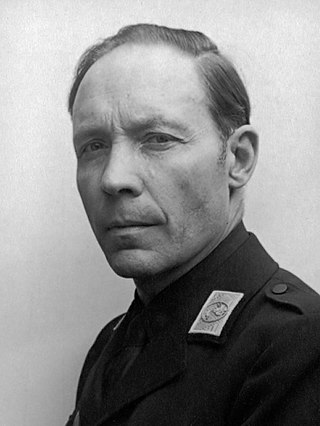
Ed Gerdes or Eduard Gerdes (1887–1945) was a Dutch painter, art teacher, member of honorary art selection committees and during the last years of his life head of the visual arts guild at the Nederlandsche Kultuurkamer.
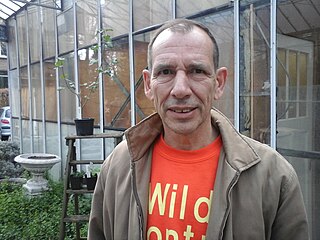
Bernardus Stefanus Henricus (Ben) Zegers is a Dutch visual artist, active as a sculptor and installation artist, and teacher and coordinator at the Gerrit Rietveld Academy.

The Rotterdamse Kunststichting RKS was an independent foundation to promote art and culture in Rotterdam from 1945 to 2005. In 2005 the foundation merged into the Rotterdam Council for Art and Culture, an advisory body, while the other tasks were transferred to the Art and Culture department of the municipality of Rotterdam.
The Arts, Information and Media Union was a trade union representing workers in various sectors in the Netherlands.
The Printing and Paper Union was a trade union representing people in the printing and papermaking industries in the Netherlands.
The Allied Union was a general union representing workers in the Netherlands.
The Arts Union is a trade union representing workers in the creative sector in the Netherlands.
Katharina "Karin" Margareta Mader (1910-1973) was a Dutch artist known for her floral paintings.
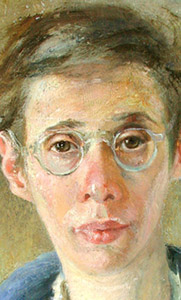
Rosa "Ro" Catherina Mogendorff (1907-1969) was a Dutch artist.
Clara Adriana van der Werff was a Dutch artist.

Regina Engelina Maria (Giny) Vos is a Dutch visual and conceptual artist. She has made almost thirty monumental works of art for public spaces.

Nicolaas Pieneman was a Dutch artist.
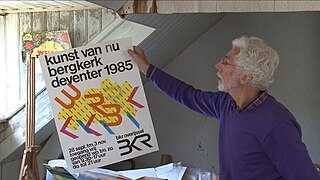
Euphrasius Franciscus Hendricus "Fra" Paalman, was a Dutch graphic designer, visual artist and art teacher, who lived and worked in Hengelo (Overijssel), the Netherlands. Paalman designed, among other, book covers, brochures, posters, vignettes and corporate identities. As a graphic artist he made autonomous work too, especially etchings, screen prints and monotypes. His oeuvre also includes photographs, collages, sculptures, drawings and paintings, which he focused more on from the 1990s onwards. This work encompasses representations of everyday things, portraits of people, animals and landscapes, visions of the city and commentary on political events, as well as constructivist compositions and abstract images. The work often has a somewhat alienating element. As a teacher, Paalman has passed on his vision, knowledge and skills to countless people, young and old, through educational programs, courses and workshops.
References
- ↑ "Jelle Troelstra zeventig". "Het vrije volk : democratisch-socialistisch dagblad". Rotterdam, 16-01-1961. Geraadpleegd op Delpher op 19-04-2018, link
- 1 2 Internationaal Instituut voor Sociale Geschiedenis. Archief Beroepsvereniging van Beeldende Kunstenaars, IISG Amsterdam 2017. p. 1
- ↑ Kunst en beweging: 50 jaar Federatie van kunstenaarsverenigingen. 1996.
- ↑ Benelux. 1982. p. 32
- ↑ Benelux dossier, 1974. p. 32
- ↑ Van FNV KIEM naar Kunstenbond, Dutch Directors Guild, 24 februari 2017
- ↑ "Kunstenbond en BBK nu definitief samen", Trouw, 26 juli 1995.